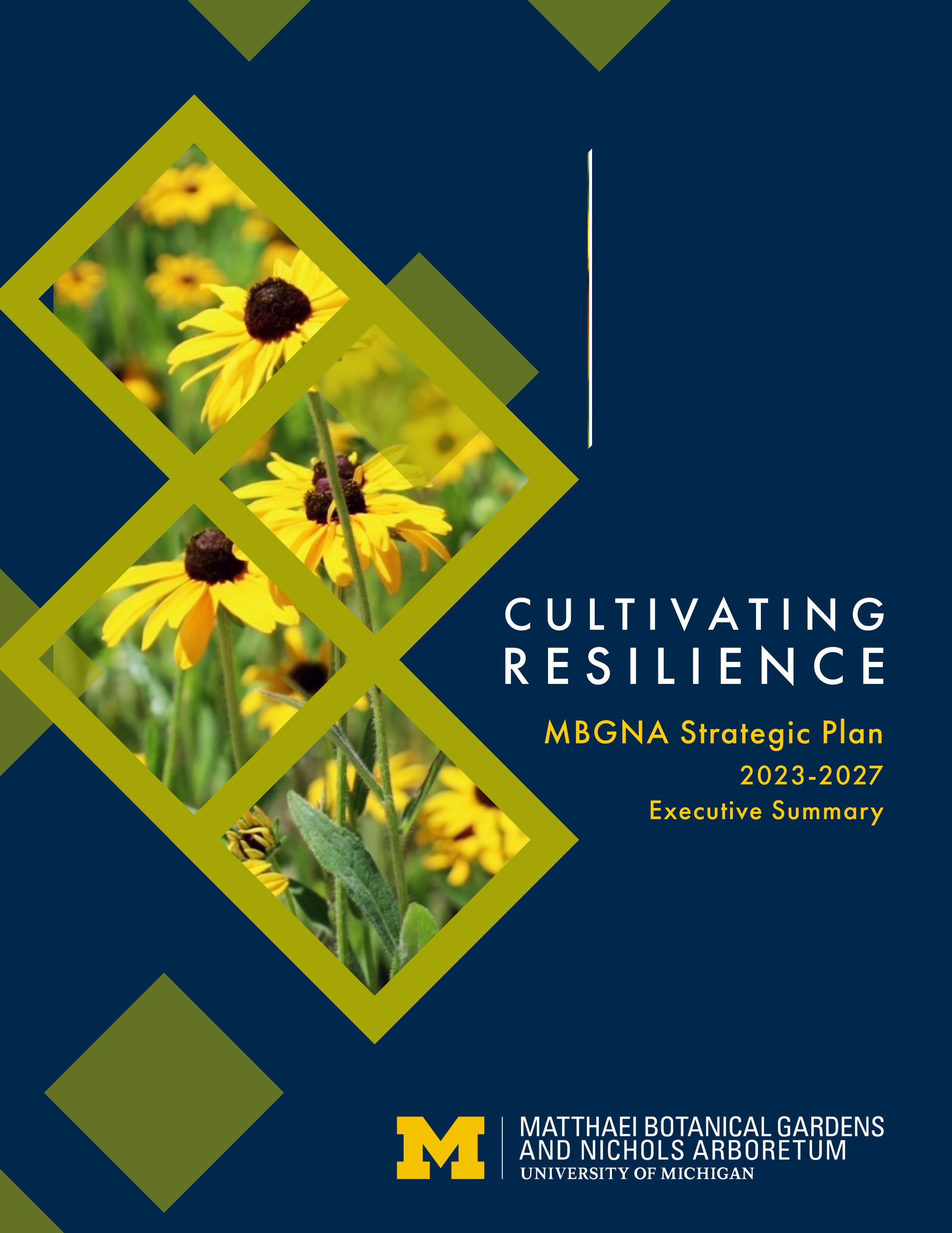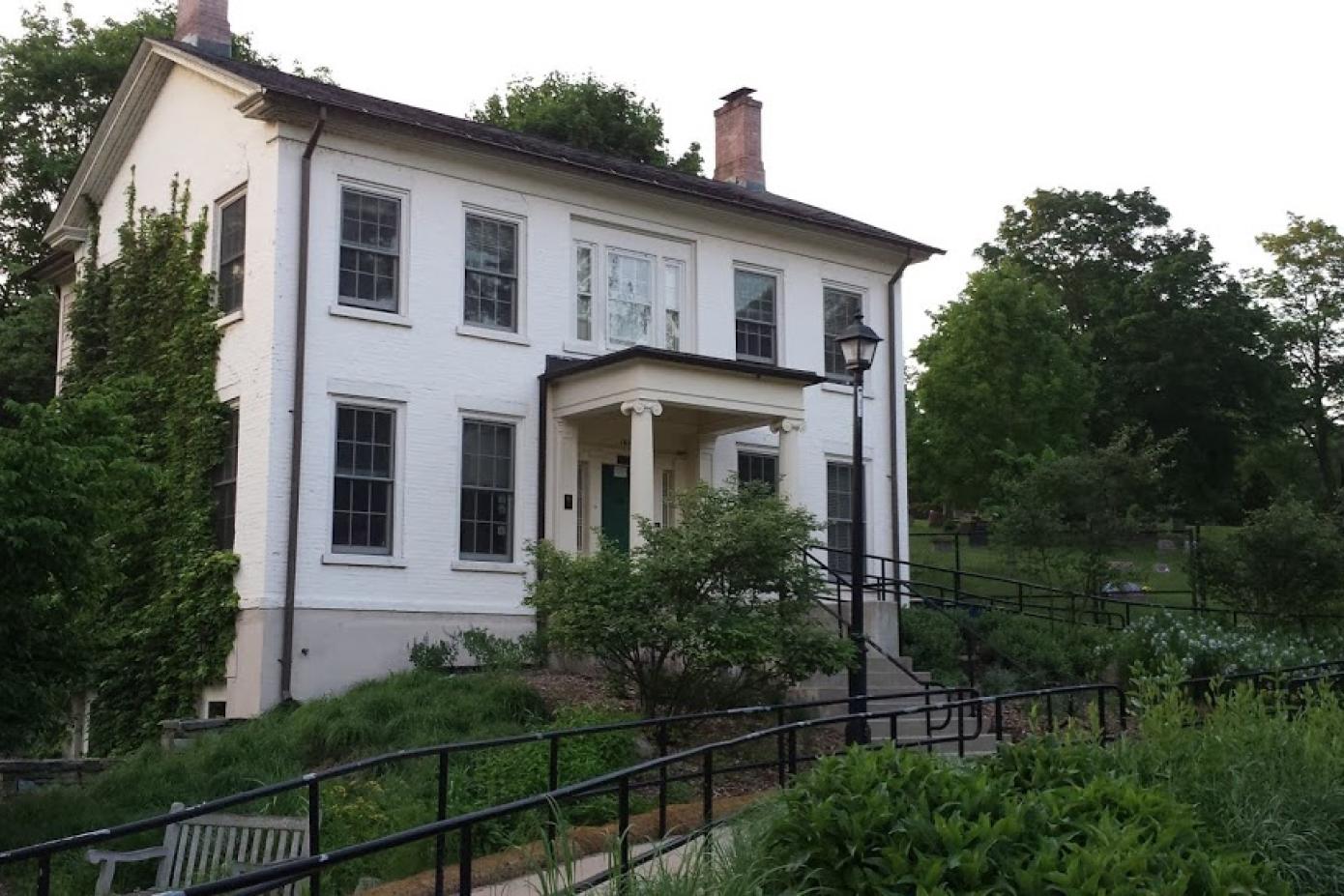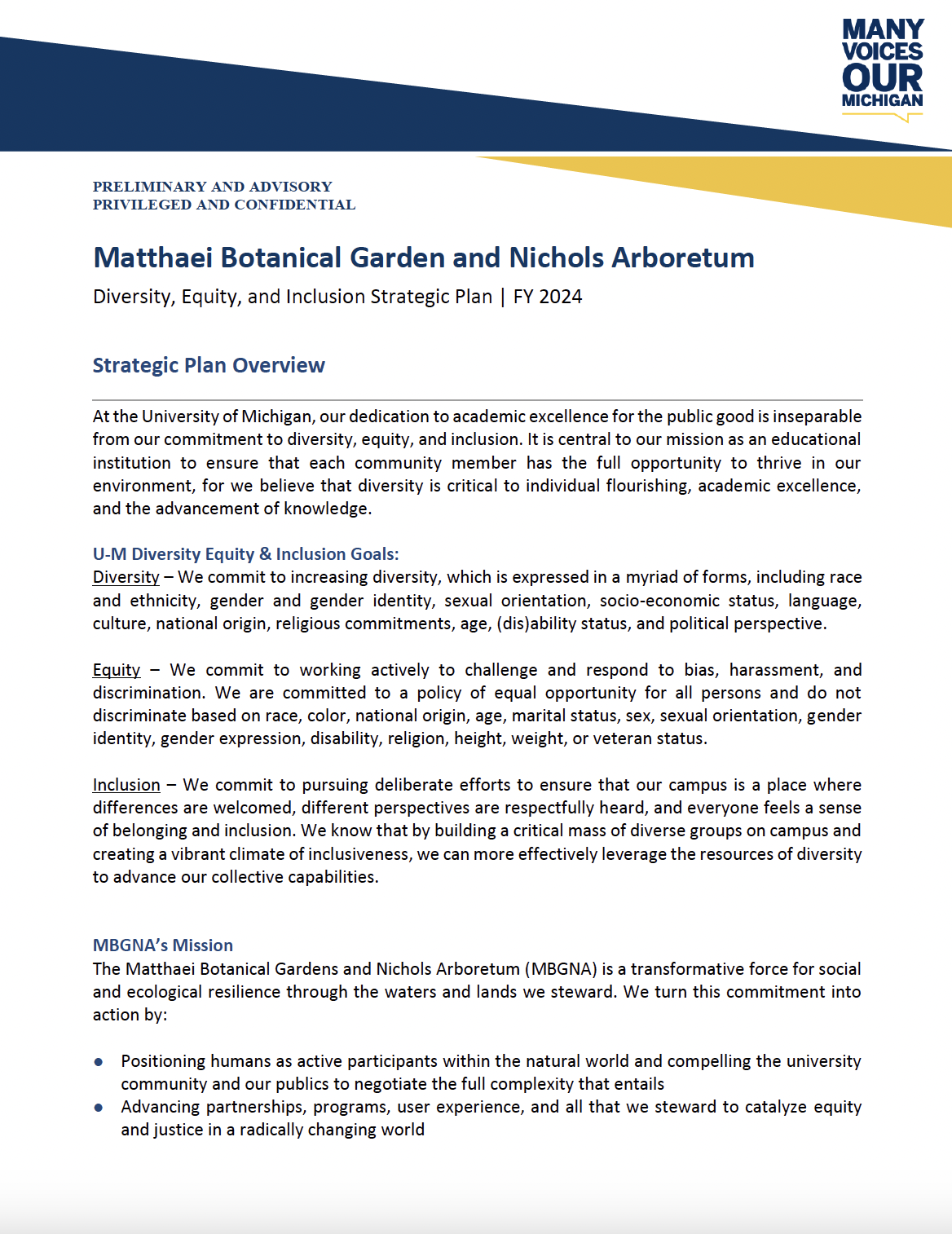About Us
Strategtic Plan
A transformative force for
social and ecological resilience.
Find out how we turn this commitment into action in our mission, strategic planning, and engagement for visitors, students, and researchers.
Our Mission
Matthaei Botanical Gardens and Nichols Arboretum is a transformative force for social and ecological resilience through the waters and lands we steward. We turn this commitment into action by:
Positioning
Positioning humans as active participants within the natural world and compelling the university community and our publics to negotiate the full complexity that entails
Advancing
Advancing partnerships, programs, user experience, and all that we steward to catalyze equity and justice in a radically changing world
Emerging
Emerging as University of Michigan’s premier partner for research, teaching, and public impact in sustainability, climate-forward practices, and biocultural diversity
Promoting
Promoting healthier communities, cultures, and ecosystems through active care and cultivation of the gardens, fields, natural habitats, and dynamic systems that sustain our world
A living, immersive museum.
Discover the depth of our commitment to ecological resilience, inclusivity, and transformative education, set against the backdrop of the diverse landscapes we steward.
DEI and Strategic Plan
We are dedicated to cultivating a community that is as diverse as the ecosystem we care for. Embodying our mission, this strategic plan outlines our commitment to fostering an inclusive environment, developing equitable opportunities, and actively integrating DEI into every aspect of our operations and programs. We maintain a steadfast commitment to ensure our gardens, fields, and habitats are a reflection of the dynamic tapestry of our global community. Read more about this commitment in the links below.

Strategic Plan
Cultivating Resilience
DEI Plan
Five-Year Strategic Objectives, Measures

History
In 1907, nestled between Geddes Road and the Huron River, the seeds were sown for a project that would come to symbolize the University's dedication towards plant life and nature's preservation - the Botanical Garden and Arboretum. Originally, spanning only 80 acres, this establishment marked the foundation of what is recognized today as Nichols Arboretum.
Now, over a century later the scope of our mission has broadened significantly. MBGNA's commitment to botanical growth, nature conservation, and research excellence can be seen through the management of an expansive expanse of more than 700 acres, encapsulating gardens, farmland, research areas, and natural preserves across the Ann Arbor region. Our facilities include a complex at Matthaei Botanical Gardens which includes a conservatory, greenhouses, laboratory, and spaces dedicated to teaching and meetings. The Campus Farm offers experiential learning opportunities for students and advocates for food justice. Nichols Arboretum hosts the James D. Reader, Jr. Center for Urban Environmental Education.
What started as a single unit has since grown, branching out into an amalgamation of five diverse locations operating under one unified mission within the University of Michigan. Today, MBGNA cares for Matthaei Botanical Gardens, Nichols Arboretum, Campus Farm, Mud Lake Bog, and Horner-McLaughlin Woods.
